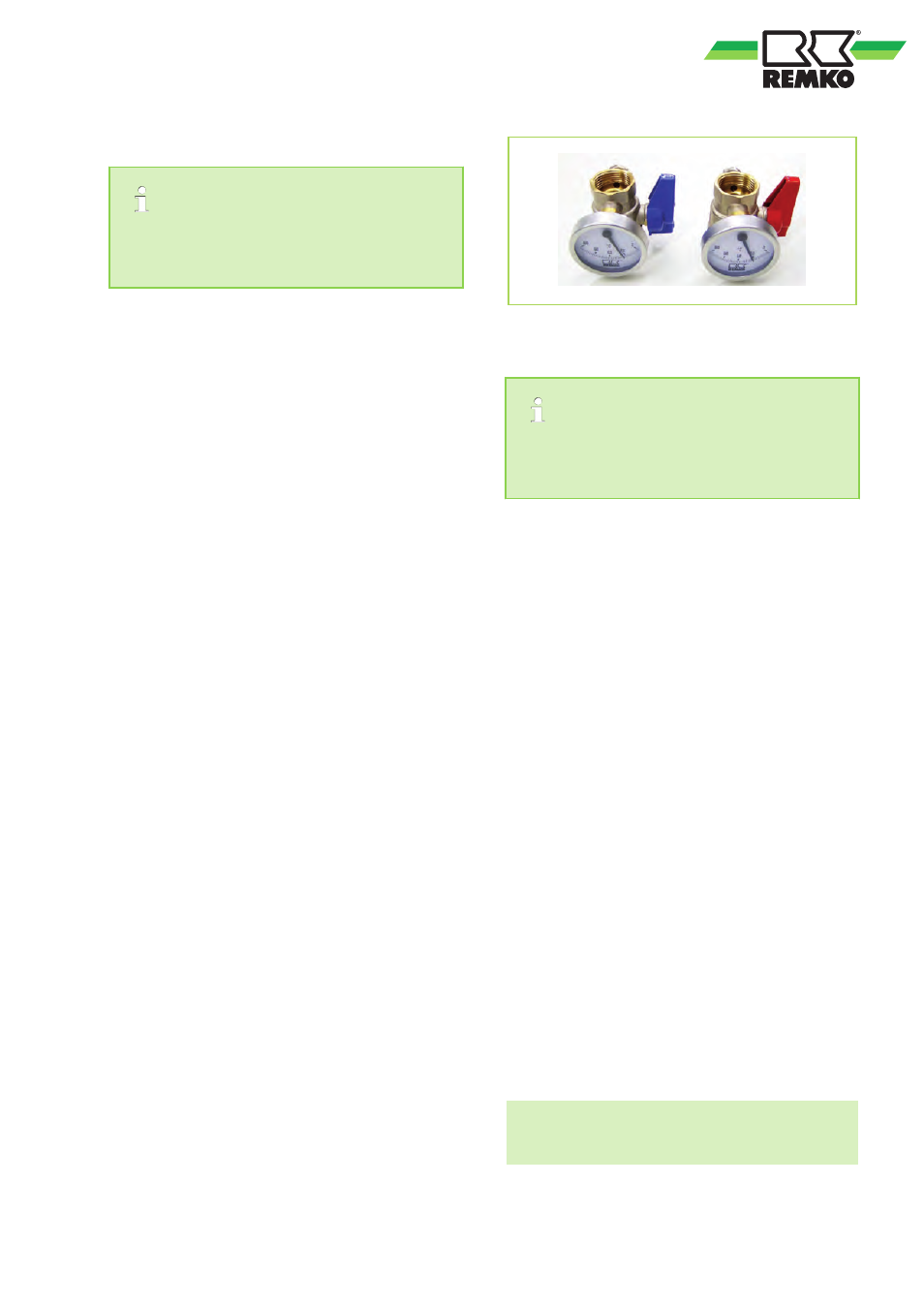5 hydraulic connection, Hydraulic connection, 5hydraulic connection – REMKO HTS 90 ALU User Manual
Page 41

5
Hydraulic connection
A separate interpretation of nominal flow rate
must be made for every system (see technical
data).
n
We recommend installing a buffer storage unit
as a hydraulic switch for hydraulic isolation of
the heating circuit.
Hydraulic isolation is required when:
- different inlet temperatures need to be ach-
ieved, e.g. underfloor heating / radiators
- the pressure drop in the heating distribution
system is greater than 80 kPa
- the use of other heat sources, e.g. solid fuel
boiler, solar or bivalent (duel-fuel) systems
n
Make a pipe-network calculation before instal-
ling the heat pump. After installing the heat
pump, it is necessary to perform a hydraulic
balancing of the heating circuit.
n
Protect underfloor heating systems against
excessively high inlet temperatures.
n
Do not reduce pipe diameters for the supply
and return connections to the heat pump
before connecting a buffer storage-unit.
n
Plan for air bleed valves and drain-off taps at
appropriate places.
n
Flush the system's entire pipe network before
connecting the heat pump.
n
One or, where necessary, several expansion
tanks must be designed for the entire hydraulic
system.
n
The system pressure of the entire pipe network
is to be matched to the hydraulic system and
must be checked when the heat pump is
turned off. Also update the static-pressure form
supplied with the heat pump.
n
As delivered, the safety assembly consists of a
pressure gauge, an air bleeder and a safety
valve. It must be mounted on a tee between
heat pump adapter and delivered stopcock.
The supplied shut-off valves are to be set
directly behind the safety assembly in the
heating circuit flow and return (Fig. 24). The
shut-off valves each contain a thermometer.
Fig. 23: Shut-off valves
Turning the thermometer heads serves to close
or open the stop valves! The dial be brought
into the desired position.
n
Install the dirt trap delivered with the unit out-
side the heat pump in the return line. Ensure
that the dirt trap remains accessible for inspec-
tion.
n
Be sure to position one gate valve upstream
and another downstream of the dirt trap. This
ensures that the dirt trap can be checked at
any time without loosing water.
n
The dirt trap must be checked during every
service of the system.
n
Additionally, a hand-operated bleeder is
installed on the heat pump for additional
bleeding.
n
All visible metallic surfaces must be addition-
ally insulated.
n
Cooling mode via the heating circuit requires a
completely vapour diffusion tight insulation
along the entire length of the pipework.
n
All outgoing heating circuits, including the con-
nections for water heating, are to be secured
against circulating water by means of check
valves.
n
Before being placed in service, the system
must be thoroughly flushed. Conduct a seal
test and perform a thorough bleeding of both
the indoor module and the entire system -
repeatedly, if necessary, in acc. with DIN
standards.
n
To prevent structure-borne transmission, we
advise you to install additional compensators in
the inlet and return lines.
Actual schemas for hydraulic integration can
be found on the internet at www.remko.de
41
